Einleitung
Benutze diese Anleitung, wenn du das Front Panel deines iPod Touch 4 austauschen willst. Beachte jedoch, dass es sowohl aus dem Touch Screen und einem LCD besteht.
Wenn du alles separat gekauft hast, musst du darauf achten, daß die gesamte Oberfläche des LCD mit Kleber bedeckte ist. Sobald der LCD am Digitizer klebt kannst du ihn nicht mehr entfernen.
Werkzeuge
Ersatzteile
-
-
Stelle das Heißluftgebläse auf niedrigste Stufe ein und beginne den unteren Bereich des iPod in der Nähe des Home Buttons zu erwärmen.
-
-
-
Setze die Kante eines Plastiköffnungswerkzeugs zwischen Frontscheibe und Plastikrahmen in der Nähe des Home Buttons ein.
-
Hebele die Unterkante der Frontscheibe nach oben. Sei dabei vorsichtig und biege das Glas nicht zu stark.
-
-
-
Wenn genug Platz ist, dass du die Unterkante der Frontscheibe anfassen kannst, dann hebe sie weg vom Gehäuse des iPod und löse so die Klebeverbindung an den Seitenkanten.
-
-
-
Ziehe vorsichtig die Fronteinheit oben weg von der Klebeverbindung, die es am iPod befestigt. Denke dabei an das kurze Touchscreen Kabel, welches die beiden Bauteile verbindet.
-
-
-
Entferne folgende acht Kreuzschlitzschrauben #00:
-
Eine 3,5 mm Schraube
-
Zwei 3,0 mm Schrauben
-
Eine 2,3 mm Schraube
-
Eine 2,4 mm Schraube
-
Drei 2,0 mm Schrauben
-
-
-
Hebele mit einem iPod Öffnungswerkzeug die dünne Stahlabdeckung von der Rückkamera hoch.
-
Entferne die Stahlabdeckung vom iPod.
-
-
-
Setze die Kante eines iPod-Öffnungswerkzeugs unter die Zwischenplatte aus Stahl in der Nähe der unteren linken Ecke des iPod.
-
Heble nach oben, um die Platte aus der Klebeverbindung, welche sie am inneren Kunststoffgehäuse befestigt, zu befreien.
-
Wenn die Platte trotzdem noch am Logic Board festhängt, dann erwärme den Bereich erneut, um den Klebstoff aufzuweichen. Löse dann die Platte mit dem Öffnungswerkzeug ab.
-
Unter der Platte ist ein dünnes und empfindliches Flachbandkabel. Achte beim Hochhebeln der Platte darauf, dass es nicht zerreißt.
-
-
-
Kippe die Zwischenplatte aus Stahl leicht, um sie vom Rückgehäuse zu lösen.
-
Hebe die Zwischenplatte aus Stahl aus dem Rückgehäuse hoch. Löse das Stück Kupferband ab, welches an der Rückkamera festklebt.
-
-
-
Entferne die folgenden drei Kreuzschlitzschrauben nahe der Oberkante des Logic Boards:
-
Eine 2,0 mm Schraube
-
Zwei 2,3 mm Schrauben
-
-
-
Hebele die Rückkamera mit der Kante eines iPod-Öffnungswerkzeugs weg vom Rückgehäuse, entferne sie aber nicht.
-
-
-
Hebe die Kante des Logic Boards nahe am Akku mit einem iPod-Öffnungswerkzeug etwas an, so dasss du sie mit der Hand fassen kannst.
-
Sei sehr vorsichtig und hebe nicht zu stark an. Das Flachbandkabel zu den Lautstärkereglern ist noch angeschlossen und zerreißt sehr leicht.
-
Hebe das Logic Board weiterhin mit einer Hand hoch und benutze ein iPod-Öffnungswerkzeug, um das Logic Board in der Nähe des Kupferbands an der Oberkante des Logic Boards anzuheben.
-
Das Logic Board lässt sich gleichmäßig hochheben, wenn der letzte Stecker der Displayeinheit von der Oberkante des Rückgehäuses freigekommen ist.
-
-
-
Fange an die Schleife aus Kupferband um den Verbinder in der Nähe der mittleren Oberkante des Logic Board mit der Kante eines iPod Öffnungswerkzeugs abzulösen.
-
Fahre mit dem Ablösen fort, bis das Band frei vom Logic Board ist.
-
-
-
Hebele den Stecker mit der Kante eines iPod Öffnungswerkzeugs aus seinem Sockel auf dem Logic Board.
-
Entferne die Fronteinheit vom iPod.
-
Entferne vom alten Kleber so viel wie möglich und bringe an den geeigneten Stellen neue Klebestreifen an.
-
Du musst auch die Metallplatte übertragen, die sich über der Frontkamera und den Sensoröffnungen befindet. Benutze dazu ein Heißluftgebläse oder einen Haartrockner.
-
Prüfe zweimal, dass das Flachbandkabel nicht zwischen LCD und Metallplatte eingeklemmt ist. Falte es auf sich selbst zurück, so dass das nicht passiert. Wenn das Kabel eingeklemmt wurde, könnte das in einem weißen Bildschirm resultieren, was nicht mehr zu reparieren ist, da die Spuren auf dem Flachbandkabel beschädigt wurden.
-
Um dein Gerät wieder zusammenzubauen folge den Anweisungen in umgekehrter Reihenfolge.
83 Kommentare
When installing the new panel, it can be quite hard to get the connector onto the board with only one set of hands. You will need to use a second person to hold the iPod and the new front panel in such a way that the connector lines up, then use your tweezers to press the new connector in place. It's pretty much impossible to do with only one person...
will the glass be as it was for before ones
like i heard that the glass will come out after some days
or it will not fix very easily
can u guide me please
shripadh -
This one works great . http://stores.ebay.com/Electronic-Florid...
ah ha, yes, a bit of practice is needed for sure on this, I have done quite a few now and that is by far the most frustrating part.
Biggest fear here is ripping the volume controller flex on the logic board, seen with the 4 pads top left of photo, i have had two rip on me and it's a real nuisance to change out the volume control flex. You can ignore step 10 really as you can still perform the operation without detaching the camera.
Dave -
Dave - Where did you get a replacement volume controller flex? I can't seem to find much of anything on the subject.
Rosalind -
Excellent. i bought from http://www.papadigitals.com/good-quality.... cheap price. now i can install it by myself because of this guider.
brent -
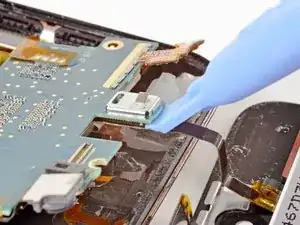
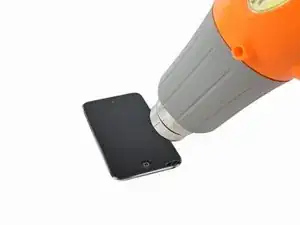
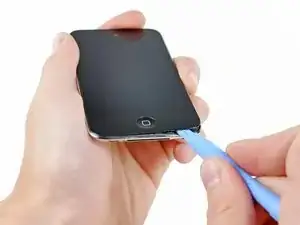
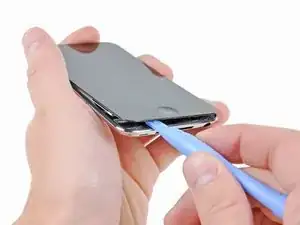
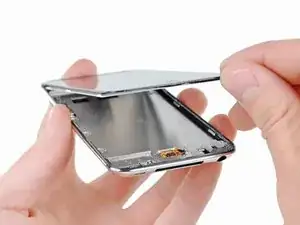
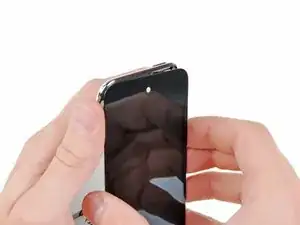
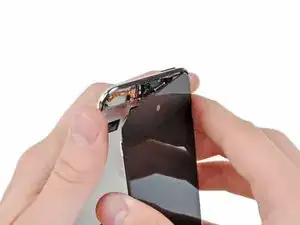
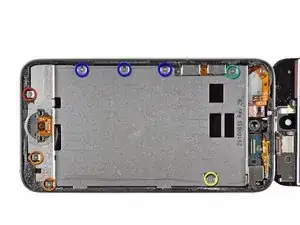
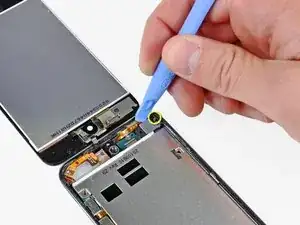
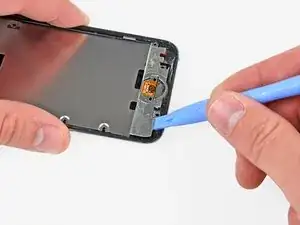
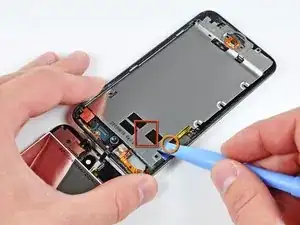
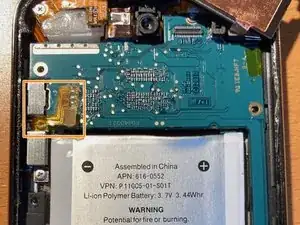
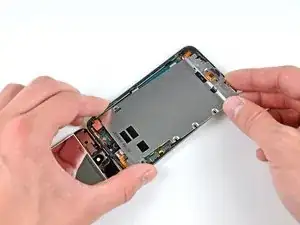
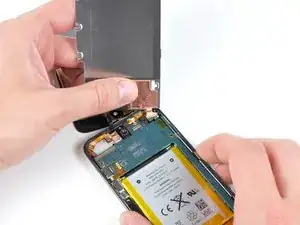
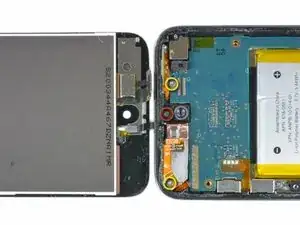
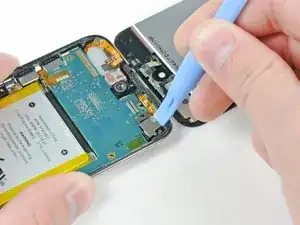
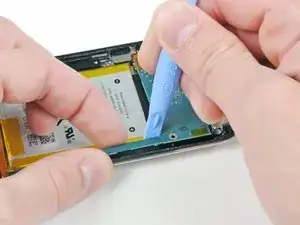
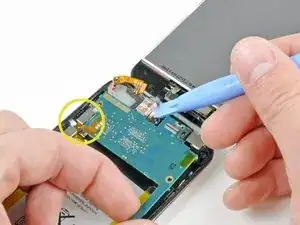
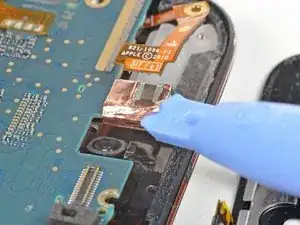
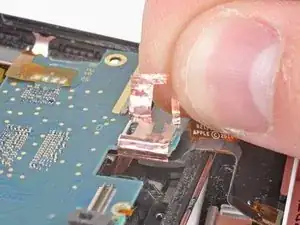

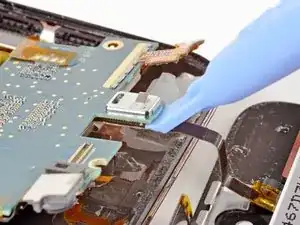

do I have to use a heat gun
Fabiola Winfield -
yes it is crucial
ben folks -
but u can use a hair dryer on warm
ben folks -
I didn't use a heat gun but this was due to the glass being rather shattered and not just cracked in the corner. The rule of thumb might be to not use excessive force, if you see that you need to use the heat gun or a blow dryer as someone suggested. I also wanted to point out the the adhesive strip just around the edges was exposed and it is rather strong so I was able to pull it around part of the edge which actually helped the glass disengage.
nirv -
Hi, thanks to this tutorial achieves replace my iPod battery to 100%, it was difficult, so thanks iFixit!
The only problem I had was with the iFixit screwdriver disappointed me greatly, as it can not remove the screws with the screwdriver.
A tip for those who first make repairs before starting the disarmament carefully read through the tutorial to not make a mistake that could damage your iPod and do not forget to place pieces in a safe place so they are not lost.
Greetings from Guatemala
Alfonso.
Alfonso Espinoza -
well then u suck
ben folks -
Be careful with the heat gun!! Don`t use it too much. You can melt something inside, specially when you`re closing the iPod.
Luiz R -
No man you can use a blow dryer!
Colton B -
Would a heat bead bag be safer option to weaken the adhesive?
Angus McLauchlan -
I had success with as low as 80°C using a hair dryer to melt the adhesive, I kept track of it with a meat thermometer. The battery says it's rated only up to 60°C...
micahvanderhill -
I got through all the parts to take the wifi antenna out!! But, I'm having a hard time putting the stuff back!!
~Palm head~ But thank you ifixit for the great and awesome directions, I understand clearly!! Thank you very much
Kaiden -
A hairdryer perfectly does the job. I’d recommend heating the bottom for 20 seconds, then attempt at inserting a plastic pick between the glass and the chassis. If it doesn’t work, reapply some heat in 10 seconds intervals until the glue gives in. You shouldn’t have to exert lots of force to release the adhesive, heat should do the job.
Then apply some heat to the top of the screen to release the remaining adhesive. Opening is straightforward. Just beware of the ultra little slack of the short yet fragile flexible digitizer cable.
Olivier Biot -
Thanks for the tip!
Lua Tech -